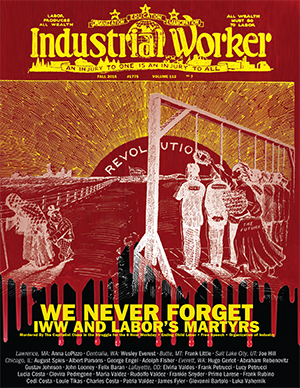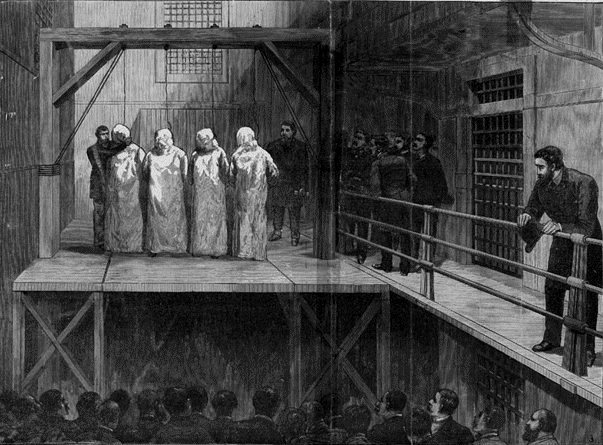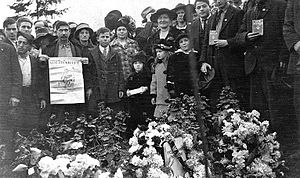For
many of us November is a melancholy month. Often slate gray skies silhouette naked trees in a chilling wind. Death seems
at hand. But so is its handmaiden—remembrance. After
all, the month begins with All Souls/Day
of the Dead when the memories of
ancestors and loved ones are honored.
English school children still chant “Remember, Remember the Fifth of
November,” now a harmless nursery rhyme about
Guy Fawkes and the Gunpowder Plot but was once an annual call to riot and mayhem against Catholics not only in Britain but in pre-Revolutionary War New
England. Here in the American Midwest, we are often reminded
of the Edmund Fitzgerald, the Great Lakes iron ore freighter that sank with all hands in a gale on Lake Superior on November 10, 1975 and
is commemorated in Gordon Lightfoot’s haunting
ballad. On November 11 Americans celebrate Veterans Day on the anniversary of the Armistice that ended the First World War. But in Britain and most Commonwealth nations it is a somber Remembrance Day, more akin to our Memorial Day in honoring war dead.
But
the month carries special meaning to the American
labor movement. Beginning in the
early 1920’s the Industrial Workers of
the World (IWW) began annually commemorating
a string of radical and union martyrs under the heading In
November We Remember! Aside from
articles in the union press—the
Industrial Pioneer and the Industrial Worker—and often local programs and memorials, the month was used to raise funds for the General Defense Committee for the legal
defense of persecuted unionists
and aid for class war prisoners.
Most
often cited in annual observances were the following cases, each with a
unique and tragic story. In each case I
will link to a blog post with a full story.
The
Haymarket Martyrs—On November 11, 1887 four of the original eight anarchists and unionists charged with murder
after a bomb exploded killing
several attacking police at a protest rally at Haymarket Square in Chicago
on May 4, 1886. Albert Parsons, August Spies, Adolph Fischer, and George Engel were hung at Cook County Jail. A fifth defendant, Louis Ling, had committed suicide
in jail to deprive the state from executing him. Their death
galvanized the international labor
movement and led directly to the establishment of May Day as International
Labor Day.
A union funeral for three of the victims of the Everett Massacre.
The Everett Massacre—The
IWW lost at least 5 dead and 27 injured when Sheriff's deputies and timber
industry gun thugs opened fire on the Verona and another boat bringing
Seattle Wobblies to Everett, Washington
for a free speech fight on November
5, 1916. About half a dozen other Wobs
were missing and presumed drowned after jumping from the
ambushed boat to evade the lethal crossfire from shore.
A memorial marker recently erected by Wobblies and labor history devotees to Wesley Everest, the World War I vet lynched in his doughboy uniform after the Centralia, Washington IWW Hall was attacked by American Legionnaires
The Centralia
Massacre—See my Armistice/Veterans
Day post. On November 1l, 1919 Westley
Everest, an IWW member and veteran
in uniform, was lynched following an attack on the IWW hall in Centralia, Washington by members of a lumbermen’s
Citizen Committee and American Legionnaires.
Joe
Hill—Legendary IWW songwriter and footloose
agitator Joe Hill (a/k/a Joel
Haglund and Joseph Hillstrom) was
executed by firing squad in Utah for a murder he could not have committed on this date in 1915. Many of his songs continue to be printed in
new editions of the IWW’s Little Red Song Book and he helped
establish a tradition of labor music inherited by Woody Guthrie, Pete Seeger, Utah Phillips, and Si Kahn and others. He may be best known to the public for I
Dreamed I Saw Joe Hill Last Night, a song by Alfred Hayes and Earl
Robinson famously recorded by Paul
Robeson and Joan Baez.
Mother Jones celebrated her birthday on May 1, 1930 a few month before she died.
Mother
Jones—Although
not a martyr and directly related to the IWW only through her attendance at its
1905 founding convention, Mary Harris Jones, the miners’ angel, is often
included in later versions of this litany. She died on November 30, 1930 well into
her 90’s after more than forty years of tireless activism and hell raising.
Both
the IWW and the labor movement also use this month to remember the countless
others who have given their lives during the years of more or less open class warfare in the United States and down to this day.
For
instance D.J. Alperovitz as part of
his massive IWW archive project at
the University of Washington has
documented the deaths of more than 170 individual associated with the union
from its founding to the 1970’s in the file IWW
Members Killed Year by Year.
The list includes some bystanders
killed when police, militia, or gun thugs shot at strikers and picketers,
the unborn babies of women who miscarried due to violence, members who died in jail often after abuse, and some who were killed in fights or while allegedly committing
crimes that may or may not have been related to their membership.
Among
the earliest listed are several members killed in the IWW’s 1909 Press Steel Car Strike in McKees Rocks, Pennsylvania. Seven members
were gunned down and murdered in the Columbine Massacre in 1924 in Colorado when the state Militia opened fire with machine guns
on a camp of coal strikers and their
families. Several other strikes had multiple
fatalities. The list also includes Wobs
who died in the Baja Rebellion of
1913, Mexican Revolution, in the Soviet Union during and after the Russian Civil War, and while fighting
as volunteers in the Spanish Civil War. The last two listed were student, journalist Frank Terrugi, an IWW member killed in the 1973 Chilean Coup whose story was an
inspiration for the film Missing
with Jack Lemon and Sissy Spacek and journalist Frank Gould who disappeared in 1974 while covering the Moro Rebellion in the Philippines.
A WPA mural depicting the Memorial Day Massacre in Chicago.
Of
course, we should remember the labor dead beyond the IWW. A far from comprehensive list would include those killed in the Great Railway Strike of 1877, decades
of mine wars in Pennsylvania, West Virginia,
Kentucky, Illinois, and Colorado including the Battle of Blair Mountain, the 1919
Steel Strike, and the 1937 Memorial
Day Massacre in Chicago.
So
much to remember….
.jpg)







No comments:
Post a Comment